Stories
Trilby Yates
Mid 1920s-early 1950s
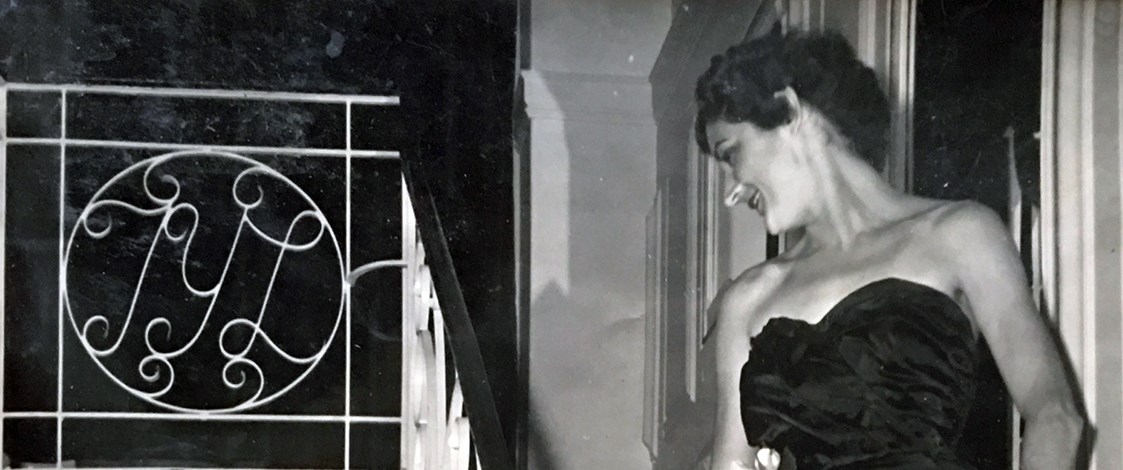
'The Ladies Paradise' was the intriguing title adopted for a millinery salon at 200 Queen Street, in Auckland. In spite of a nine-year age gap between sisters Trilby and Julia Yates their mutual love of fashion prompted the establishment of a fashionable business that livened up Auckland’s Queen Street for almost 30 years.
Older sister Trilby trained to become a milliner at The Bon Marché, a large millinery emporium founded in Auckland in 1904 by Frenchman Joseph Zahara. In the mid 1920s she left to open her own hat shop, 'Trilby Yates: The Ladies Paradise', with her younger sister Julia. While Trilby could "take a tea towel and make a hat out of it", her sister could barely sew. Julia did however have presence and style so while Trilby attended to the hats, she attended to the office and the salon. In the wake of Trilby’s early death, Julia took on the sole responsibility of both running the business and raising Trilby’s young daughter Digsy, whom she later adopted.
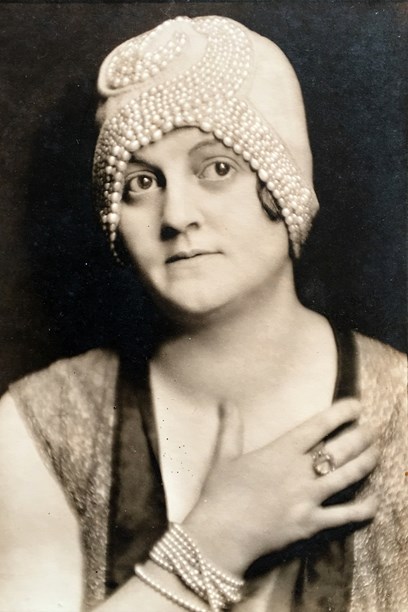
Trilby Yates was a talented milliner who trained at The Bon Marché emporium on Karangahape Road in Auckland. Image © Trilby Asgher.
In the early 1930s, Julia decided to move the business away from millinery and sell firstly high fashion knitwear and then bespoke womenswear. Julia employed a designer for her workroom. She approached Nancy Hudson who was working for dressmaker Alice Thomas. Alice designed made-to-order garments from her Vulcan Lane workroom room for clients including the governor general's wife, Lady Freyberg. Nancy Hudson was the designer at Trilby Yates until the late 1940s when she left to work in Australia.
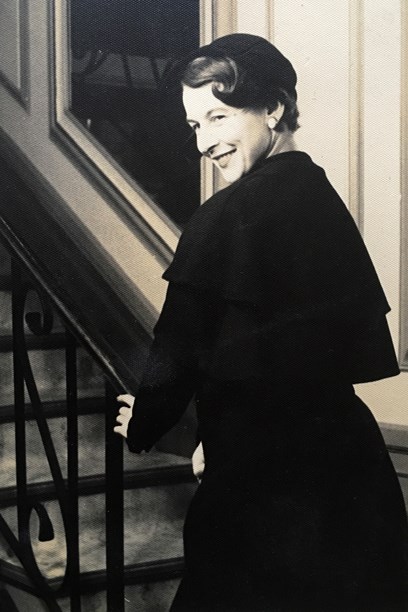
Nancy Hudson worked as a designer at Trilby Yates from the early 1930s to the late 1940s. Image © Trilby Asgher.
In 1936 Julia moved the salon to the more prestigious address of 179 Queen Street. The shop had two street-front windows in which Julia could show off new garments. Julia’s niece Ata Yates grew up on a farm near Te Awamutu and recalls visiting 'Aunty Julia’s' exotic salon. The decor was Oriental style - a large, round Chinese Moon Gate separated the salon from the office at the back. "In one window there would be fresh flowers and in the other a mannequin dressed in something striking. The rest of the clothes were out of sight in wardrobes. The store was dark red and shadowy - you’d have to be brave to go in if you were an ordinary person."
The salon was redecorated at the end of the war. The dark red was replaced by a colour scheme of pink and cream with sliding mirror cabinets around the room. Julia hosted two 'openings' a year - a winter show in February and one for spring. The shows were crowded with eager shoppers, who watched a small parade before clamouring to buy the latest designs.
When Ata Yates left school in 1946 she started in the Trilby Yates workroom, located on the 2nd floor of 26 Durham Street West. Julia owned the building which also included Gainsborough Millinery as a tenant. Across the road was the Art Deco building that housed Broadcasting House and the 1ZB studios. In the summer some of the workroom staff would eat lunch on the fire escape and request songs from the 'ZB boys' to listen to that afternoon.
There were about a dozen 'girls' in the workroom at this time, working under one or two designers - Nancy Hudson then June Todd, Maxine Sigglecoe and later Julia's niece Digsy Yates. In 1945 a young man, Hall Ludlow, joined the workroom. Julia wasn't impressed with his designs but decided to give him a chance. She ordered her seamstresses not to giggle about him because he was a man and the first in the country who wanted to make dresses.
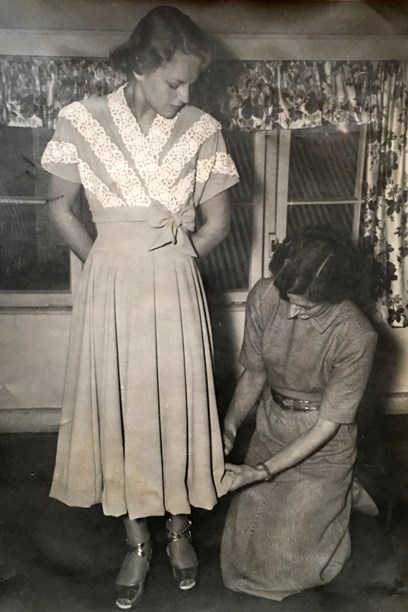
Designer June Todd marks the hem of a dress worn by Miss New Zealand 1949, Mary Woodward. Image © Trilby Asgher.
As was common at the time there was an order of progression in the Trilby Yates workroom. Bev Johnson started at around the same time as Ata. Bev’s father worked in the Government Import Office and knew the salon manager Betty Clark through the business’ fabric imports. Nancy Hudson preferred to hire inexperienced staff with no 'bad habits' so Bev’s lack of sewing skills were seen in a positive light. New staff began with hand sewing on the finishing table; overcasting seams, sewing on buttons or hooks and eyes and hemming garments. After about six months, they would move to alterations where much of the work entailed adjusting customer purchases to fit perfectly. From there the new staff moved on to machining, and finally if they had talent, to cutting and designing.
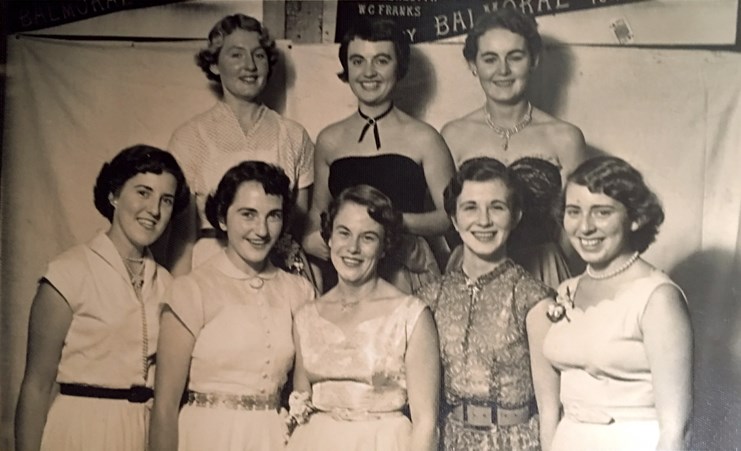
The workroom ‘girls’ at Bev Johnson’s (centre front) 21st birthday. Kate Lambourne is to her right and Ata and Digsy Yates are in the back row.
All garments were one-off designs, although Bev Johnson recalls a particularly irate customer who had bumped into a woman at the races wearing a coat in the same fabric (but a different style). Trilby Yates’ garments were known for their quality with each machinist making only three or four garments a week. Julia imported fabric from Europe, such as beautiful lace fabrics and trims from Switzerland. Bev recalls the striking use of fabric in reversible coats. The coats would have black on one side and tomato red on the other, or plain brown reversed with a check fabric.
From the 1930s, Julia regularly travelled overseas. Sometimes she took her niece Digsy or her designers with her to attend the shows in Paris or New York. Julia returned home with ideas, fabric and sometimes models who would parade in the seasonal openings. On one of her early overseas trips, Julia was thrilled to see women wearing trousers. The resulting display of women's trousers in the Trilby Yates salon window caused an uproar in the early 1930s. But Julia was smitten and by 1940 she rarely wore anything else.

Julia Yates (right) caused a scandal in the early 1930s when she stepped out in trousers. Image © Trilby Asgher.
Julia was known by her staff as being strict but fair, and spent most of her time on the shop floor or in the office unless she was needed in the workroom. The two premises were connected by an intercom and occasionally a call would come through to the workroom to complain about sewing "done by the hand of an elephant".
Digsy also started in the workroom, progressing to become a cutter/designer by the early 1950s. But when Digsy decided to leave to get married, Julia made the decision to retire and close the business. Betty Clark had recently left to become a business partner in Emma Knuckey Gowns, and eventually about six of the workroom staff found employment at Emma's workroom in Darby Street. Other staff found work at Violet Gowns. Ata returned to Te Awamutu where she started her own dressmaking business with a friend from Trilby Yates, Joan Laurie.
In her retirement Julia travelled extensively to Africa, Russia, China, Europe and America. She died in her 90s.
Digsy continued to work as a dressmaker with her daughter, also named Trilby. They worked from home during the 1970s and some of their most special designs were labelled with the leftover original Trilby Yates Ltd labels.
NOTE: The Ladies Paradise was the title of a novel by Émile Zola. Published in 1883, it is set in a Department Store which is loosely based on Le Bon Marché in Paris.
Text by Kelly Dix. Banner image © Trilby Asgher.
Published October 2017.